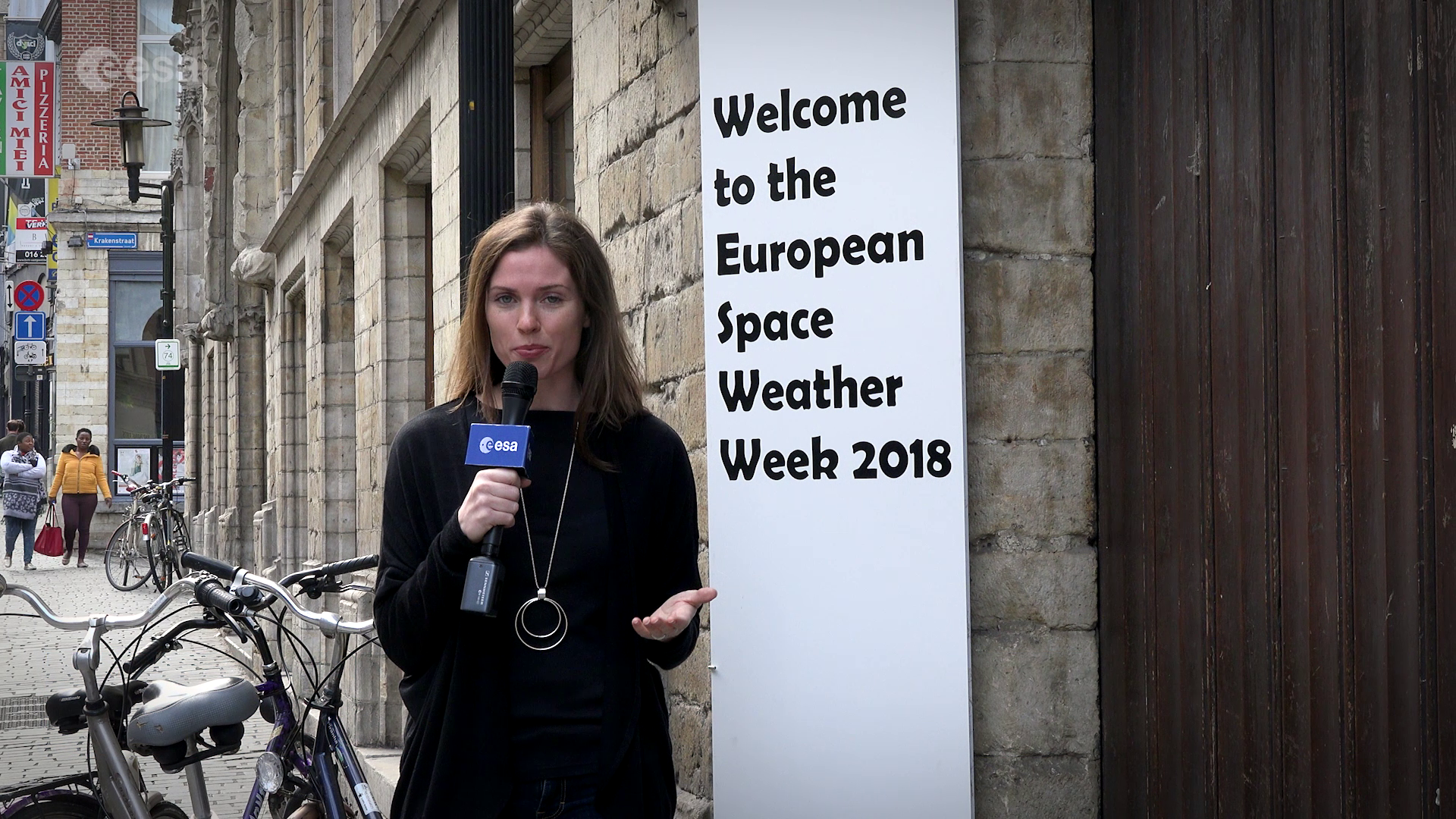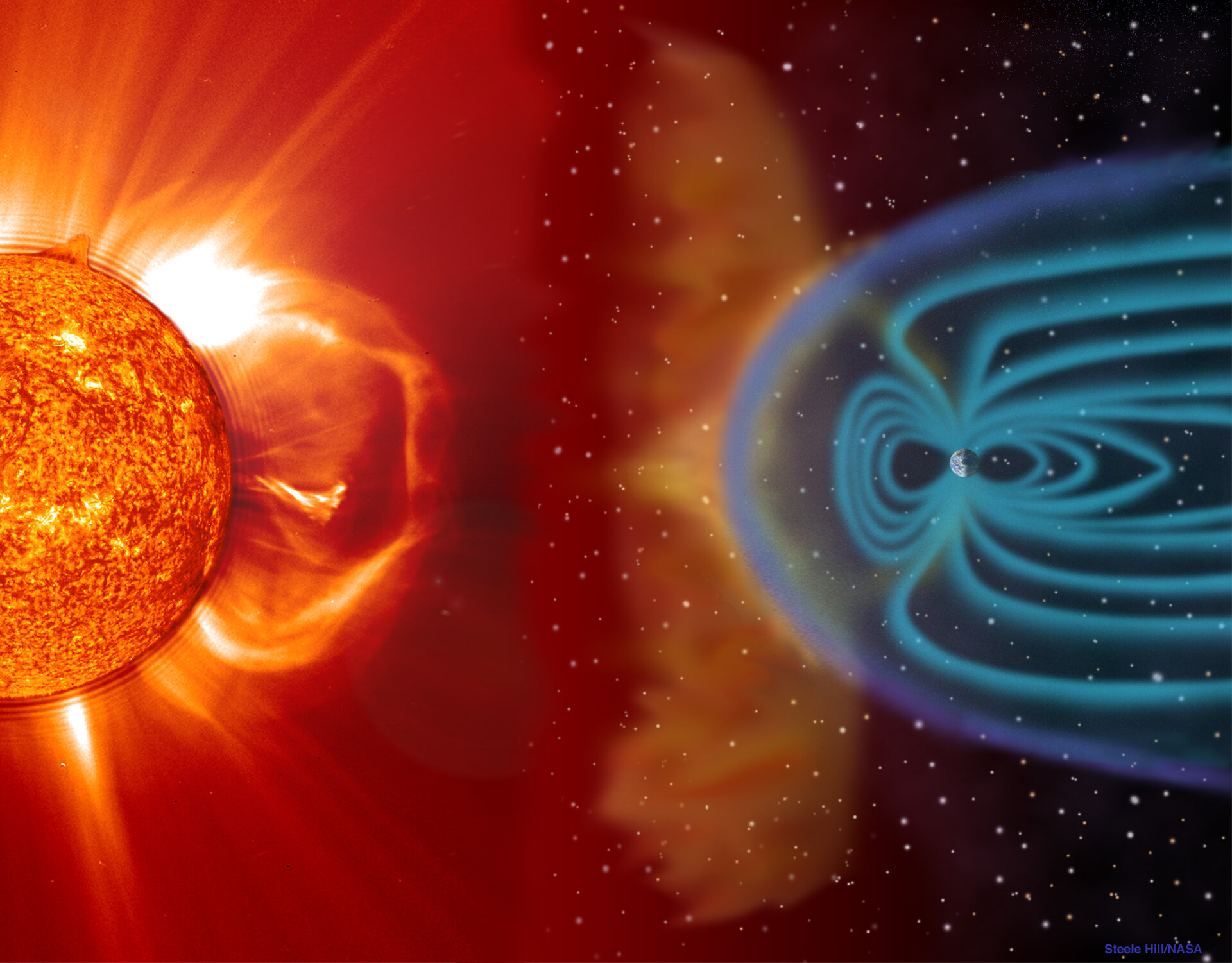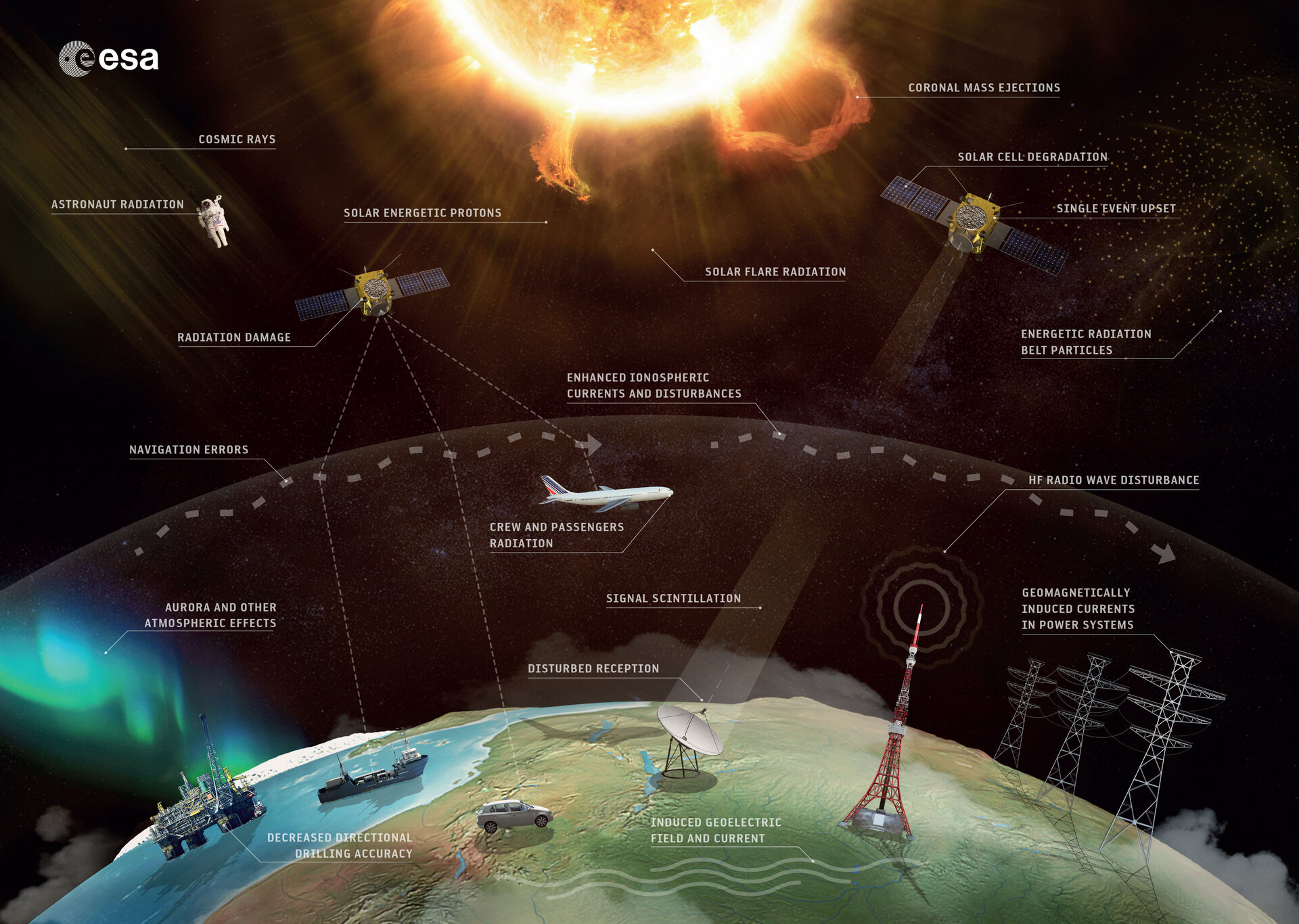Global S&T Development Trend Analysis Platform of Resources and Environment
| This week we're under the space weather | |
| admin | |
| 2019-11-18 | |
| 发布年 | 2019 |
| 语种 | 英语 |
| 国家 | 欧洲 |
| 领域 | 地球科学 |
| 正文(英文) | This week, space weather experts are coming together in Liège, Belgium, for the main annual event in their calendar, European Space Weather Week. 

Footage from last year's European Space Weather Week
Access the video Life next to a raging star is full of uncertainty and poses a threat to the technologies on which we are becoming increasingly dependent. For this reason, scientists, engineers, satellite operators, power grid technicians, communication and navigation specialists, people working in aviation and more, are now meeting to discuss solar activity, its influence on Earth, and what we can do about it. Life next to a raging starOur Sun dominates the entire Solar System. Unpredictable and temperamental, it has made life on the inner planets impossible due to intense radiation and colossal amounts of energetic material that it blasts in every direction. These constant emissions create the ever-changing conditions in space known as ‘space weather’. 
So how did life come to thrive on Earth? Our magnetic field protects us from the solar wind — the constant stream of electrons, protons and heavier ions from the Sun — and from Coronal Mass Ejections (CMEs), the Sun’s occasional outbursts of billion-tonne clouds of solar plasma into space. The most extreme events, arrivals of fast CMEs or high-speed solar-wind streams, disturb our protective magnetic shield, creating geomagnetic storms at Earth. Modernity is more fragile than it seems
These storms have the potential to cause serious problems for modern technological systems, disrupting or damaging satellites in space and the multitude of services — like navigation and telecoms — that rely on them, blacking out power grids and radio communication and creating a radiation hazard for astronauts in space, even serving potentially harmful doses of radiation to astronauts on future missions to the Moon or Mars. While these events can’t be stopped, advance warning of an oncoming solar storm would give operators of satellites, power grids and telecommunication systems time to take protective measures. ESA to provide solar warningESA is planning a unique mission that will do just this. The Lagrange mission will make much-needed observations of the Sun, gathering the data needed to provide such advance warnings. 

ESA's future Lagrange mission to monitor the Sun
Access the video Watching the Sun from the fifth Lagrange point – a special position in space in which the gravitational forces of the Sun and Earth balance out – the satellite will monitor potentially hazardous sunspots and high-speed solar wind streams before they come into view from Earth. It will detect solar events and their propagation toward the Earth with higher accuracy than is possible today, transmitting data to Earth and distributing it into ESA’s Space Weather Service Network in near real-time, to generate warnings and forecasts. As much of modern human society becomes ever more reliant on space-based services, vulnerable to the Sun’s outbursts, protective measures against space weather are becoming increasingly important. Space19+

Space safety & security: what's on the table for Space19+?
Access the video This month, at ESA's 2019 Ministerial Council, space weather and early warning services will be a main topic presented as part of the Agency's vision for the future in the emerging field of space safety and security. This week, ESA will highlight the unique phenomenon of space weather, from the science behind it and how we study it, to its effect on satellites in space and ESA’s plans for the future. Check the Soundcloud for two podcasts on the subject, including an exploration of the Carrington event of 1859, and how a solar storm would affect us today. As always, follow @ESAoperations on Twitter for all the lastest on Space Safety and European spacecraft operations. |
| URL | 查看原文 |
| 来源平台 | European Space Agency |
| 文献类型 | 新闻 |
| 条目标识符 | http://119.78.100.173/C666/handle/2XK7JSWQ/216057 |
| 专题 | 地球科学 |
| 推荐引用方式 GB/T 7714 | admin. This week we're under the space weather. 2019. |
| 条目包含的文件 | 条目无相关文件。 | |||||
| 个性服务 |
| 推荐该条目 |
| 保存到收藏夹 |
| 查看访问统计 |
| 导出为Endnote文件 |
| 谷歌学术 |
| 谷歌学术中相似的文章 |
| [admin]的文章 |
| 百度学术 |
| 百度学术中相似的文章 |
| [admin]的文章 |
| 必应学术 |
| 必应学术中相似的文章 |
| [admin]的文章 |
| 相关权益政策 |
| 暂无数据 |
| 收藏/分享 |
除非特别说明,本系统中所有内容都受版权保护,并保留所有权利。
修改评论